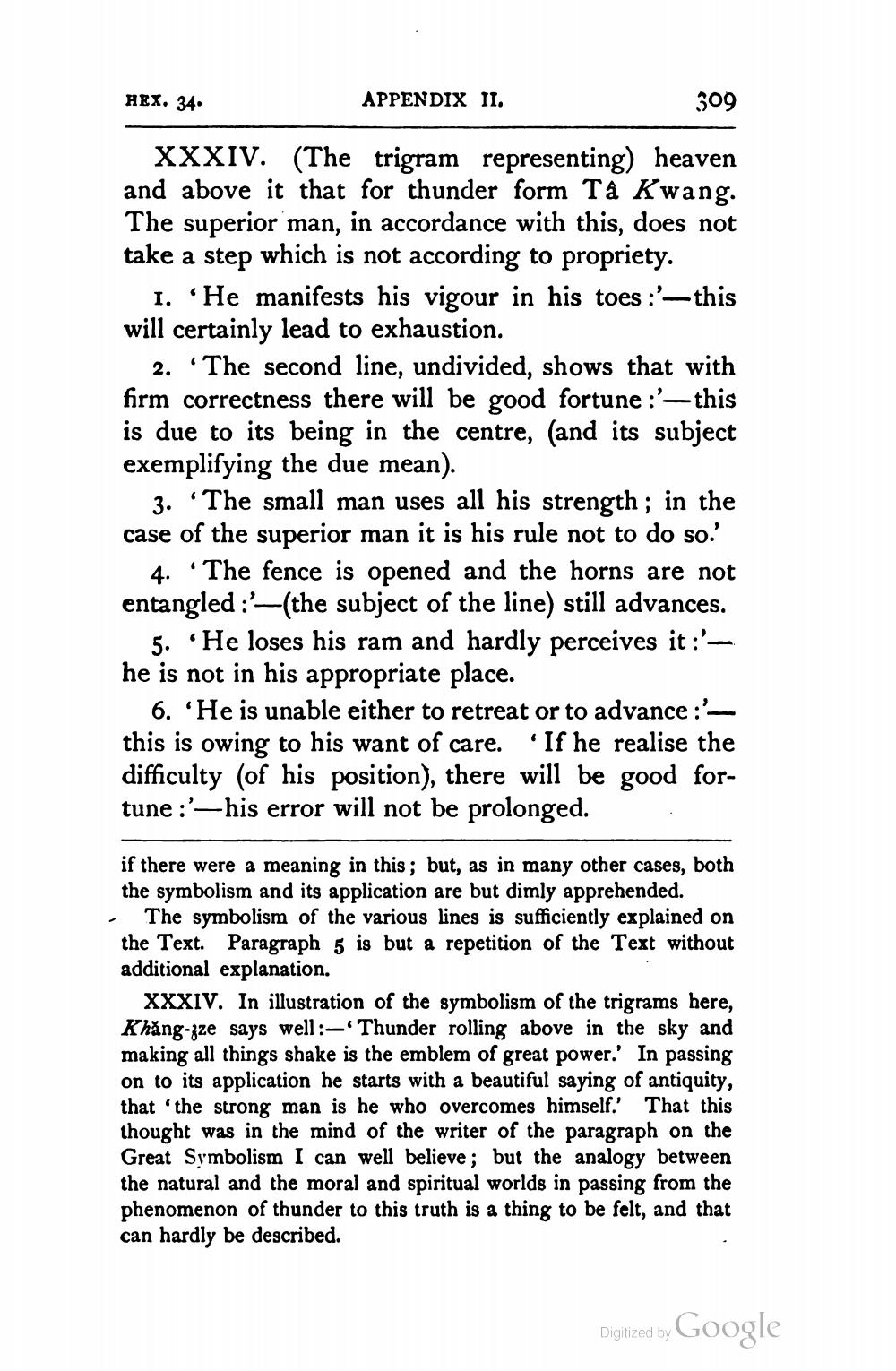________________
HEX. 34.
APPENDIX II.
309
XXXIV. (The trigram representing) heaven and above it that for thunder form Tà Kwang. The superior man, in accordance with this, does not take a step which is not according to propriety.
1. “He manifests his vigour in his toes :'- this will certainly lead to exhaustion.
2. “The second line, undivided, shows that with firm correctness there will be good fortune :'- this is due to its being in the centre, (and its subject exemplifying the due mean).
3. "The small man uses all his strength; in the case of the superior man it is his rule not to do so.'
4. “The fence is opened and the horns are not entangled :'-(the subject of the line) still advances.
5. He loses his ram and hardly perceives it:'he is not in his appropriate place.
6. 'He is unable either to retreat or to advance:this is owing to his want of care. •If he realise the difficulty (of his position), there will be good fortune :'-his error will not be prolonged.
if there were a meaning in this; but, as in many other cases, both the symbolism and its application are but dimly apprehended.
The symbolism of the various lines is sufficiently explained on the Text. Paragraph 5 is but a repetition of the Text without additional explanation.
XXXIV. In illustration of the symbolism of the trigrams here, Khăng-zze says well:—Thunder rolling above in the sky and making all things shake is the emblem of great power.' In passing on to its application he starts with a beautiful saying of antiquity that 'the strong man is he who overcomes himself. That this thought was in the mind of the writer of the paragraph on the Great Symbolism I can well believe; but the analogy between the natural and the moral and spiritual worlds in passing from the phenomenon of thunder to this truth is a thing to be felt, and that can hardly be described.
Digitized by Google




